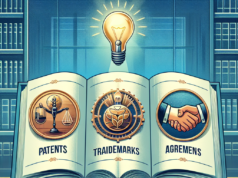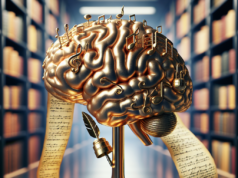
In the rapidly evolving landscape of the digital age, the interplay between patent and copyright laws has become increasingly complex. As technology advances, the need to protect intellectual property (IP) has never been more critical. This article delves into the distinct roles of patents and copyrights, their evolution in the context of digital innovation, and the challenges they face in enforcement. By examining key differences, notable legal battles, and future trends, we aim to shed light on the hidden battles that shape the intellectual property landscape today.
Understanding the Distinct Roles of Patent and Copyright in Intellectual Property Law
Patents and copyrights serve as two fundamental pillars of intellectual property law, each designed to protect different types of creative works. Patents are primarily concerned with inventions and processes, granting inventors exclusive rights to their innovations for a limited period, typically 20 years. This protection incentivizes innovation by allowing inventors to recoup their investments. In contrast, copyright protects original works of authorship, such as literature, music, and software, granting creators exclusive rights to reproduce, distribute, and display their works. While both forms of protection aim to encourage creativity and innovation, they operate under distinct legal frameworks and serve different purposes within the broader context of intellectual property.
The Evolution of Patent and Copyright Laws in the Context of Digital Innovation
The advent of the digital age has significantly influenced the evolution of patent and copyright laws. As technology has advanced, the nature of creative works has transformed, leading to new challenges in IP protection. For instance, the rise of the internet and digital distribution has made it easier for creators to share their works globally, but it has also facilitated widespread infringement. In response, lawmakers have sought to adapt existing laws to better address the unique challenges posed by digital innovation. This has included the introduction of the Digital Millennium Copyright Act (DMCA) in the United States, which aims to protect copyright holders in the online environment, and ongoing discussions about reforming patent laws to better accommodate software and digital inventions.
Key Differences Between Patent Protection and Copyright Protection Explained
While both patents and copyrights aim to protect intellectual property, they differ significantly in their scope, duration, and requirements. Patents require a formal application process, including a detailed description of the invention and its utility, and are subject to rigorous examination by patent offices. In contrast, copyright protection is automatic upon the creation of an original work, requiring no formal registration, although registration can enhance enforcement options. Additionally, patents typically last for 20 years, while copyright protection can last for the life of the author plus 70 years, or longer for corporate authorship. These differences highlight the distinct nature of the protections offered by each form of IP, influencing how creators and inventors navigate their rights in the digital landscape.
The Impact of Digital Technology on Patent and Copyright Enforcement Challenges
Digital technology has introduced significant challenges in enforcing both patent and copyright protections. The ease of copying and distributing digital content has led to rampant piracy and infringement, making it difficult for copyright holders to protect their works. Similarly, the rapid pace of technological advancement has resulted in an increase in patent litigation, as companies seek to defend their innovations against alleged infringement. The global nature of the internet further complicates enforcement, as IP laws vary widely between jurisdictions, creating a patchwork of protections that can be exploited by infringers. As a result, both patent and copyright holders must navigate a complex landscape of enforcement challenges, often requiring innovative strategies to protect their rights.
Case Studies: Notable Legal Battles Between Patent and Copyright Holders
Several high-profile legal battles have highlighted the tensions between patent and copyright holders in the digital age. One notable case is the ongoing dispute between Apple and Samsung, which has involved numerous patent infringement claims related to smartphone technology. This case underscores the fierce competition in the tech industry and the lengths to which companies will go to protect their innovations. On the copyright side, the case of the Recording Industry Association of America (RIAA) v. Napster exemplifies the challenges of enforcing copyright in the digital realm, as the music-sharing platform faced legal action for facilitating widespread copyright infringement. These cases illustrate the complex interplay between patent and copyright protections and the ongoing struggles faced by rights holders in the digital landscape.
Future Trends: Navigating the Complex Landscape of Intellectual Property Rights
As we look to the future, the landscape of intellectual property rights will continue to evolve in response to technological advancements and changing societal norms. Emerging technologies such as artificial intelligence, blockchain, and the Internet of Things (IoT) present new challenges and opportunities for both patent and copyright holders. For instance, the rise of AI-generated content raises questions about authorship and copyright protection, while blockchain technology offers potential solutions for tracking and enforcing IP rights. Additionally, ongoing discussions about reforming IP laws to better reflect the realities of the digital age will likely shape the future of patent and copyright protections. Navigating this complex landscape will require collaboration between lawmakers, industry stakeholders, and legal experts to ensure that intellectual property rights remain robust and relevant in an ever-changing world.
In conclusion, the hidden battles between patent and copyright holders in the digital age reveal the intricate dynamics of intellectual property law. As technology continues to advance, the need for effective protection of creative works and innovations becomes increasingly critical. By understanding the distinct roles of patents and copyrights, the challenges posed by digital technology, and the ongoing legal battles that shape this landscape, stakeholders can better navigate the complexities of intellectual property rights. The future will undoubtedly bring new challenges and opportunities, necessitating a proactive approach to safeguarding the rights of creators and inventors in an increasingly digital world.



























